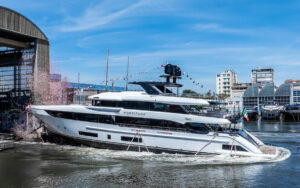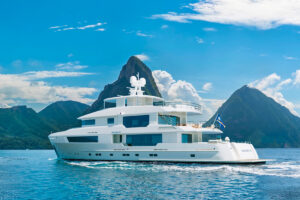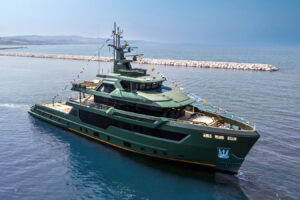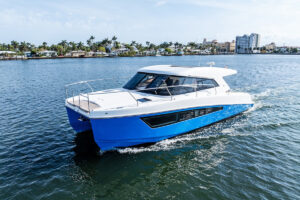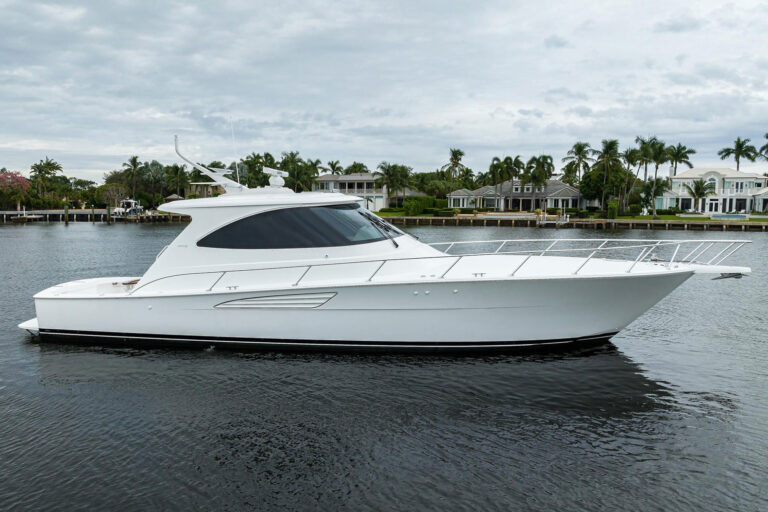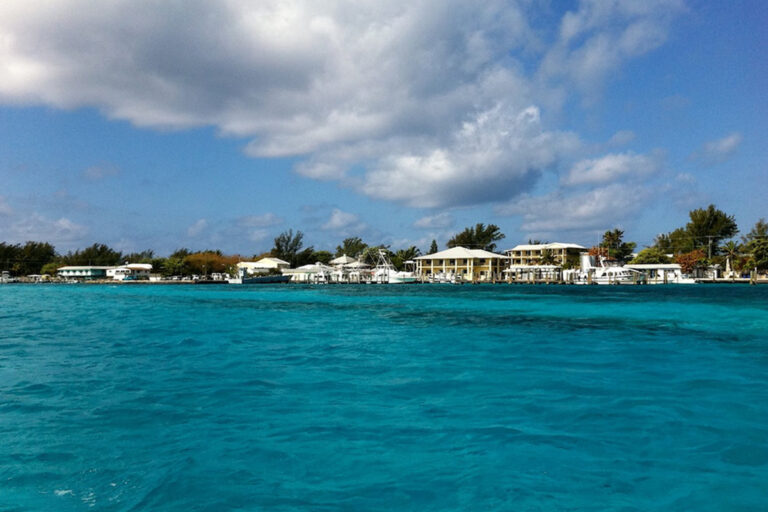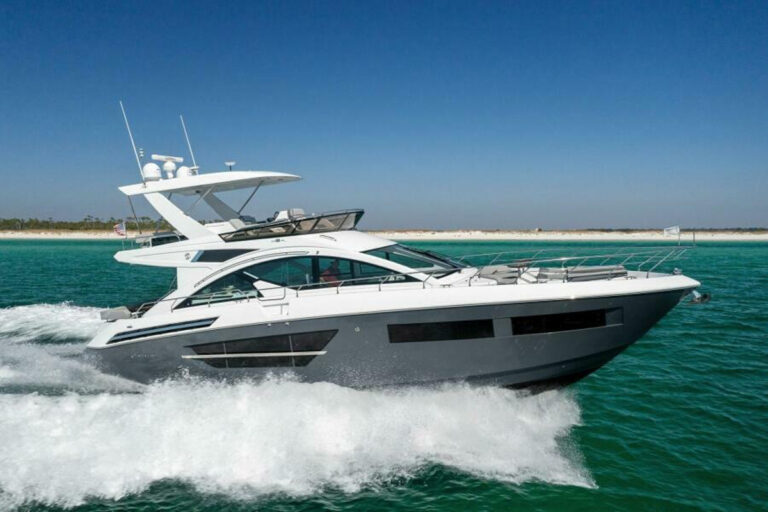




In 2007, Capt. Robert McCall was piloting a wave-piercing catamaran ferry on a tricky run. Waves were in tight rows, battering the smaller monohulls around his ferry.
“During that trip, I became acutely aware of the boat’s capabilities and limitations,” says McCall. “I realized that its exceptional seakeeping abilities could be taken much farther with modern technology and hydrodynamic advances.”
McCall spent months designing his Wave Dominator hull form. Now, after eight years and thousands of hours of design, structural analysis, computational fluid dynamics and wind-tunnel testing, he is ready to build his Glider XD18.
This 60-footer has an over-the-water cockpit and slender twin hulls (called blades). They were engineered with processes like those used in advanced aerospace design and have a multidimensional form.
Their functions should include faster speeds, improved fuel efficiency and a soft ride in rough seas. McCall says his SX-Eand GT models, which range in size from 98 to 230 feet, will offer 50 percent faster speeds and 60 percent better fuel efficiency than conventional sport yachts and superyachts in the same size range.
“Gliders have sharp and streamlined hulls with a high power-to-weight ratio, giving them a reduced power requirement to achieve the same speeds, or much faster speeds, with the same power,” he says.
Glider Yachts, +44 208 133 0654; glideryachts.com

